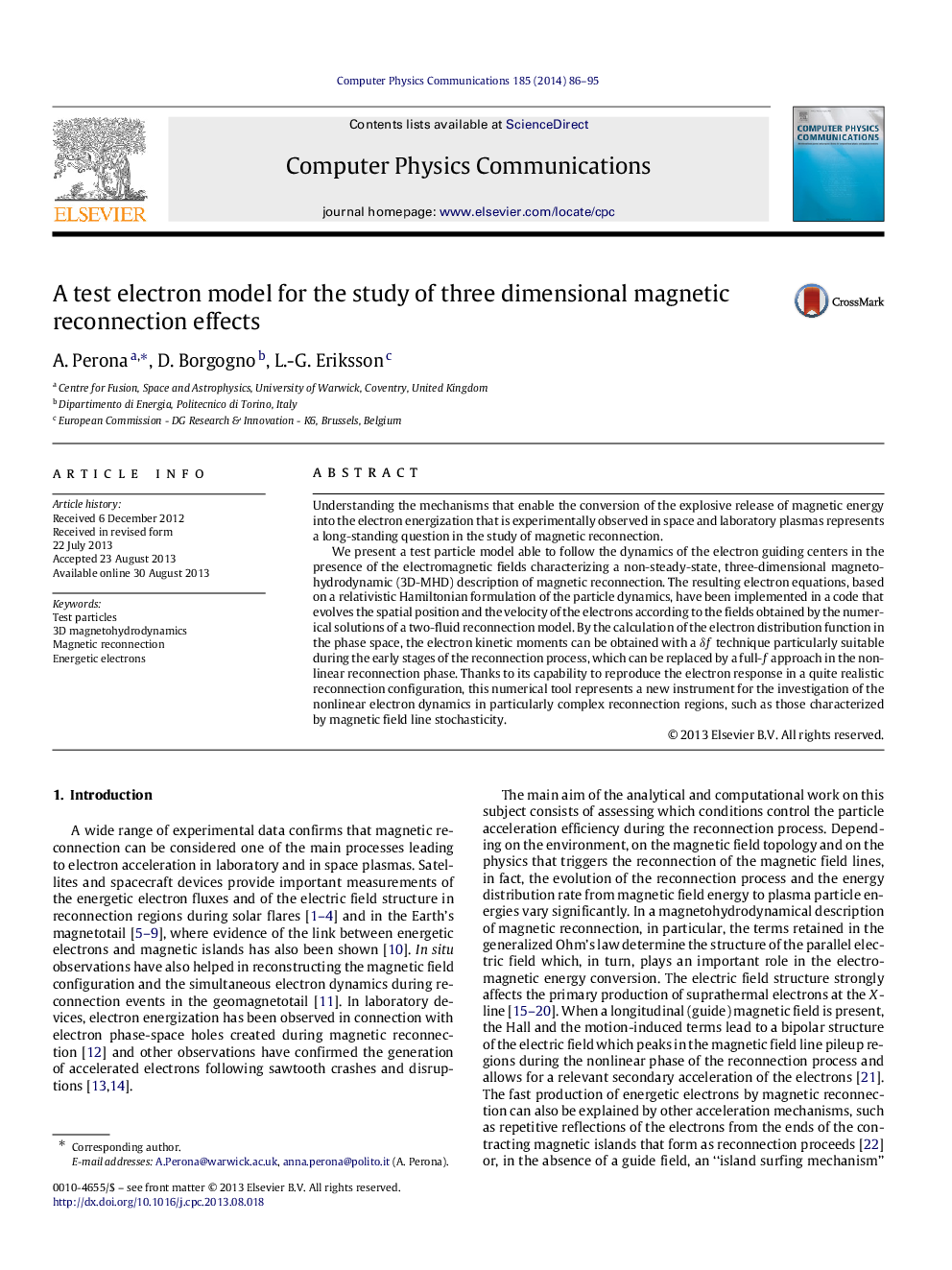| Article ID | Journal | Published Year | Pages | File Type |
|---|---|---|---|---|
| 502535 | Computer Physics Communications | 2014 | 10 Pages |
Understanding the mechanisms that enable the conversion of the explosive release of magnetic energy into the electron energization that is experimentally observed in space and laboratory plasmas represents a long-standing question in the study of magnetic reconnection.We present a test particle model able to follow the dynamics of the electron guiding centers in the presence of the electromagnetic fields characterizing a non-steady-state, three-dimensional magnetohydrodynamic (3D-MHD) description of magnetic reconnection. The resulting electron equations, based on a relativistic Hamiltonian formulation of the particle dynamics, have been implemented in a code that evolves the spatial position and the velocity of the electrons according to the fields obtained by the numerical solutions of a two-fluid reconnection model. By the calculation of the electron distribution function in the phase space, the electron kinetic moments can be obtained with a δfδf technique particularly suitable during the early stages of the reconnection process, which can be replaced by a full-ff approach in the nonlinear reconnection phase. Thanks to its capability to reproduce the electron response in a quite realistic reconnection configuration, this numerical tool represents a new instrument for the investigation of the nonlinear electron dynamics in particularly complex reconnection regions, such as those characterized by magnetic field line stochasticity.
